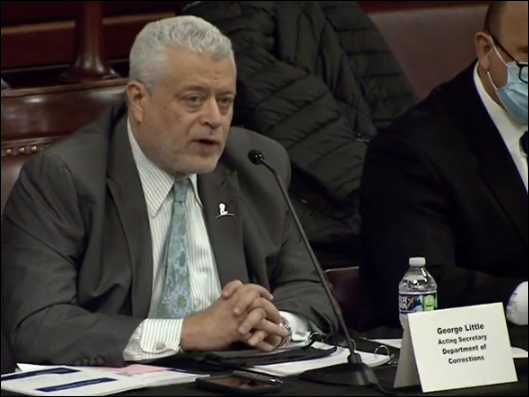By Victor Skinner | The Center Square contributor
(The Center Square) – Republicans in the Pennsylvania House Appropriations Committee continued to question projections in Gov. Tom Wolf’s budget during testimony from the departments of Corrections, General Services and Office of Administration.
Republicans questioned the reasoning behind a 4% increase in the State Correctional Institution appropriation in Wolf’s budget to $2.166 million for the upcoming fiscal year, followed by decreases the two following years.
Rep. Keith Greiner, R-Lancaster, asked why those figures conflicted with the Department of Corrections (DOC) proposal submitted to the budget office in October that predicted a 3% budget increase for four fiscal years after 2023-24.
DOC acting Secretary George Little said during Wednesday’s hearing he was “not aware of the specific reasoning behind that” but speculated it was related to broader policy objectives.
“I think the elephant in the room is, where will we go with our capacity?” he said. “I can only imagine that there were some other considerations based on where our population is now and where it has been trending as we’ve had this incredible reduction of some 8,900 inmates in house from March 2020 to today.
“We don’t think that downward trend will continue at the same rate. I think the question becomes will we be able to maintain at the levels where we are now. So I can only assume that that would be the basis for flattening out of the projections,” he said.
DOC officials also suggested changing policies on COVID-19 could impact medical costs.
Line items for field services and inmate education and training – parole expenses – also were flat-lined in the governor’s proposed budget, though Little said he expects “modest increases” in parole costs.
Little said he does not anticipate reductions in programs.
Democrats repeatedly suggested significant cost savings through “compassionate release” programs.
Rep. Dave Zimmerman, R-East Earl, questioned DOC officials about how $8 million from the department’s budget spent on Wolf’s vaccine promotion – which offered five vacation days or the cash equivalent for vaccination – affected vaccination rates.
Little said the promotion “did have some impact” on raising staff vaccination rates from about 47% to “a little bit above 50% after.”
Officials with the departments of Administration (OA) and General Services (DGS) struggled to answer questions related to budgets included in Wolf’s plan.
Rep. Natalie Mihalek, R-Pittsburgh, questioned the need for the governor’s $30 million plan to expand child care for state employees when current facilities are below capacity. DGS Secretary Curt Topper said $2 million would go to existing facilities and the remainder to a reimbursement program for commonwealth employees, but the details on the reimbursement program remain unclear.
Topper was also unclear on a $2.9 million line item in the budget to “provide resources to support efficient and effective service delivery,” as well as the effectiveness of the department’s vaccination promotion.
Office of Administration officials told lawmakers the budget office estimated the overall expense of the vaccination promotion for state employees was $45 million. Rep. Clint Owlett, R-Tioga, pointed out the money was spent from existing department budgets without a plan to replenish it.
Greiner questioned why the OA vaccination promotion estimate of $45 million conflicts with a $100 million prediction from Treasurer Stacy Garrity, and Gov. Wolf’s estimate of $24.5 million during a November interview.
Secretary of Administration Michael Newsome said Wolf’s comments referred to only cash payouts from the program and did not include vaccination costs, but he could not account for why the budget office and Treasury estimates varied.
“I think they should talk to each other,” he said, adding that the full cost remains to be seen.
“We are unable at this point, or don’t have the information to calculate that,” Newsome said. “That number will be available much later in the year, probably around October or November.”
